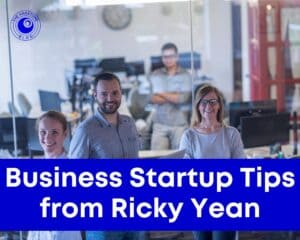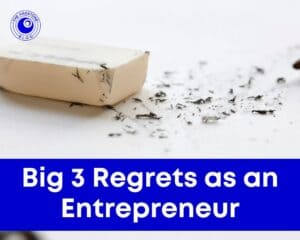I’m excited about this special guest article because it’s a deep dive into designing websites that make money. It explains the difference between a static, passite site and an engaged, active lead generator. As entrepreneurs, we tend to be generalists and do all the things in our business. However, we all have limits. No one is an expert in everything. So to talk about websites as a marketing investment, I’m sharing this post by Steve Bimpson.
This website uses affiliate links, which may earn a commission at no additional cost to you, only if you decide to make a purchase. See my disclosure about affiliate links here. This post is not a paid placement. HoneyBee published my post on how to create boundaries as an entrepreneur, and I’m sharing his marketing expertise. Friendly collaborations between businesses have so many benefits. So read on to learn about coaching and mentoring your website to maximize enquiries and sales.

Why am I talking about coaching & mentoring your website, as if it’s an employee? Actually, that’s exactly how we see it ….. and perhaps it’s how you should, too?
Let me explain.
Websites that Work
As a marketer, I’ve always talked about ‘websites that work’. This is because so many business owners have come to me, over the years, with stories of having invested lots of time, energy and money into their website, only to find that their ‘baby’ generates precious little – in terms of website visitors – and few, if any, enquiries or sales.
To me, a ‘website that works’ is one that drives visitors and then converts them to enquiries, appointments, sales or whatever it is you’d like them to become. A website that does this ensures that, ultimately, it brings in far, far more money than it costs to build and run. And does so, consistently.
Sadly, websites like this seem to be few and far between.
Websites that Make Money
Whilst this approach has always worked very well for me and my clients, it was my HoneyBee business partner, Bernie, who introduced me to the idea of thinking about your website as an employee. An approach that’s proven to be even more effective.
These days, we still talk about ‘websites that work’ but we talk a lot more about ‘websites that make money’.
Call me ‘old fashioned’, if you like, but no marketing should ever be a cost. At the end of the day, it should always be an investment that provides you with a great return. And that approach should apply, in exactly the same way, for anyone you employ. Your investment in them should help generate more revenue – and more profit – for you and your business. Hence Bernie’s analogy.
This leads to a couple of obvious questions.
- Firstly, what would you rather have?
- A website that doesn’t work very hard and costs you money? Or …..
- A website that works really hard and makes you money?
- Secondly, is your website working hard enough for you, right now?
Before we take a closer look at how and why a coaching & mentoring approach will help your website, let’s just clarify the difference between coaching & mentoring.
Coaching vs Mentoring
A mentor shares their knowledge, skills, expertise, experience and perspective to help other people develop and grow. Essentially, they provide great education/training, great answers and great solutions.
A coach provides guidance to help other people reach their full potential by helping them discover their own answers and solutions, from within. Essentially, they ask great questions.
And as we all know, if you want better answers, ask better questions.
Coaching and Mentoring Your Employees vs Coaching & Mentoring Your Website
Coaching & Mentoring Your Employee
A professional approach to taking on an employee, would involve going through a certain process and asking yourself lots of questions in order to come up with the following.
- A Job analysis. Identifying the purpose and duties involved, how and where it’s carried out, the expected results and how it fits in with the company culture.
- A Job Description. An overview of the role, responsibilities and objectives. It provides clarity during induction in the early days and later on, with regard to performance and objectives.
- A Person Specification. An overview of the qualifications, skills and competencies you’d expect an applicant to have, as well as defining some of the personal qualities you might look for. Then you’d …..
- Advertise and promote the position to invite applications.
- Manage the applications.
- Carry out interviews.
- Appoint your new employee.
- Onboard them. To include providing any initial training they may require.
- Provide them with any ongoing training they may need.
- Provide a mentor/coach (which might be you!) to help them develop within their role, within your team and within your business.
- Implement objectives and agree targets for their performance management.
And the list could go on. The point is, to get the best out of an employee, you need a really comprehensive plan that maps out and manages, what I call, the ‘Employee Journey’. That is, the journey the employee takes from the first time they encounter your company, what makes them decide to apply for the job, the process they go through to get the job, how they’re onboarded, the training they receive and the ongoing development they enjoy, to help them grow and evolve in their role and, where applicable, provide opportunities for promotion.
If you want your website to work as hard for you as your employees do – and you should – it follows that it would be good to take the same kind of approach to your website – whether you’re starting from scratch or wanting to develop and evolve your website from where it is, right now.
Unfortunately, most business owners aren’t thinking this way and, as a result, end up with a website that doesn’t work.
The Kind of Website You Probably Don’t Want
Most businesses end up with what might be characterised as a ‘Brochure Style’ website. A site that does little more than tell people what they do. That type of content doesn’t tend to drive either traffic or conversions and, if your website isn’t working as hard for you as you’d like it to, that may well be one of the reasons why (there are quite a few).
The added danger with a ‘Brochure Style’ website is that your ideal clients are concerned – even consumed – by their problems and challenges. They want you to be talking about and helping them with those, rather than what we call, ‘we-ing all over yourself’. You know what I mean. We do this, we do that, we do the other. Your ideal clients don’t care what you do. They do care, passionately, about their challenges.
What is Possible with Your Website
At HoneyBee, we have great plans for our website, even though it’s still very new. We’re already using it to:
- Manage our calendars and schedule a variety of appointment and consultation types (a huge timesaver).
- Sell some of our products and services online – and we’ll be adding more, very soon, including memberships and courses (selling 24/7).
- Deliver automated downloads and processes to help manage our visitors along their Customer Journey, including our new SEO Tour (more 24/7 marketing & selling).
We’ve made a start, but the plan is to make the site hugely content rich – and optimised for SEO. This way, it’ll attract our ideal clients and demonstrate our knowledge skills, expertise, experience and perspective in helping them with the two types of day-to-day challenges they have. Those being …..
- The problems they have but don’t want ….. and …..
- The results they want but don’t have.
Our website’s going to be working very hard on these things and is already generating revenue for us, as well as helping us be far more efficient in how we operate. The main point you need to really understand is that websites that make money, don’t make money by accident. They make money by design.

Coaching & Mentoring Your Website
Whilst your employment strategy looks to manage your ‘Employee Journey’, your website should be designed and built to manage your ideal clients ‘Customer Journey’. Essentially, thinking about how you can lead your ideal clients, gently by the hand, to the point where they want to buy from you.
You should also be using your website to automate as much as possible for you because, if you want to grow, you need to become more efficient. More joined-up, if you like (check out our JOINED UP Marketing eBook) – and systems help enormously with that.
When I ask, it seems practically all business owners want websites that make money. But few seem to know how to make that happen. This is where ‘coaching your website’ comes in. Essentially, asking lots of great questions to help you become really, really clear on everything you need to know to make it happen. This is why we have our ‘HoneyBee Website Workbook’.
Here are some of the things you need to think about and the questions you need to ask.
- What are your vision, mission & values? What’s your purpose? What’s your reason why? Think about this from the perspective of your ideal client because people buy why you do what you do, before they buy anything else.
- Website Strategy. What do you actually want your website to do? Be bold here and think big. Whilst you may not be able to do everything straight away, it’s good to have a plan and to prioritise what you want to have happen, first. Ultimately, your website should grow and evolve as your business does. So, do you want it to …..
- Generate enquiries?
- Generate consultations?
- Books appointments?
- Capture leads by offering and delivering lead magnets?
- Educate your ideal clients?
- Sell your products/services online?
- Deliver on-demand webinars/presentations?
- Offer genuine help and support through your content?
- And so on. What would work particularly well for you and your business?
- Keyword & SEO Strategies. Everyone loves the idea of search engines sending you ‘free’ visitors to your website. However, this too happens by design, not by accident.
- Have you done any keyword research?
- Do you target specific keyword phrases with the content on your website?
- How will you manage your keyword & SEO strategies?
- Your Ideal Clients. Describe them in detail. The more detail the better.
- Who are they?
- Where do they hang out?
- What are their interests?
- What problems do they have but don’t want?
- What results do they want but don’t have?
- What keeps them awake at night?
- What are the objections that might prevent them from buying from you?
- What are they fearful about?
- What would definitely make them buy from you?
- What’s the transformation that would take place, after you do what you do? What I call ‘The Afters’.
- Why do they buy?
- The Customer Journey. Get to understand the journey or process your ideal clients go through from the moment they develop an awareness that they have a problem to the point where they’re happy to buy.
- What stages do they go through?
- How do they evaluate potential suppliers?
- Your Products/Services. The more you understand them, the better.
- Have you clearly defined your product/service offerings?
- What’s the USP of your product/service? Each should have its own USP = Unique Sales Proposition or ‘Your Utterly Seductive Proposal’ (a terrific book by Tim Coe).
- How could you package your product/service to make sure it’s unique and stands out in your marketplace?
- Which products/services require a lead magnet(s)?
- What would make a great lead magnet(s)?
- What do you offer in terms of upsells, down sells and cross sells?
- Do you have a natural ‘Product Staircase’? Where clients buy progressively more expensive products/services.
- Do you have any upsells, down sells and cross-sells?
- What do you offer in terms of guarantees/risk reversal?
- Do some (or all) of your products/services lend themselves to online sales?
Conclusion
As I hope you can see, the purpose of this coaching process is to gain a great deal of clarity over every aspect of your ideal client, their ‘Customer Journey’ and your sales proposition, not to mention exactly what tasks you want your website to handle for you. All of which informs the structure, strategy, content, features and function of your website. And all of it’s designed to lead your ideal clients, gently by the hand, to the point where, they want to buy from you.
As I said earlier, websites that make money, don’t make money by accident. They make money by design. Is your website designed to make you money?
And if you’ve found this post interesting, informative, or useful, please share it with your network. We’d really appreciate it.

Steve Bimpson
HoneyBee Marketing















